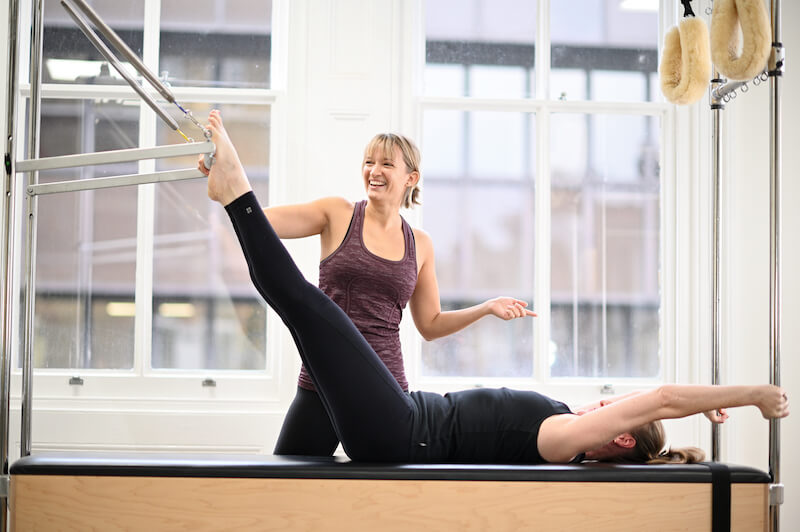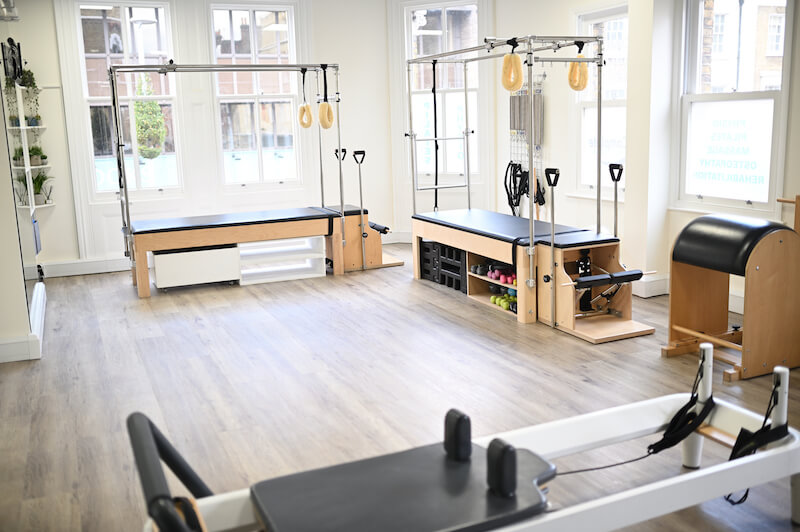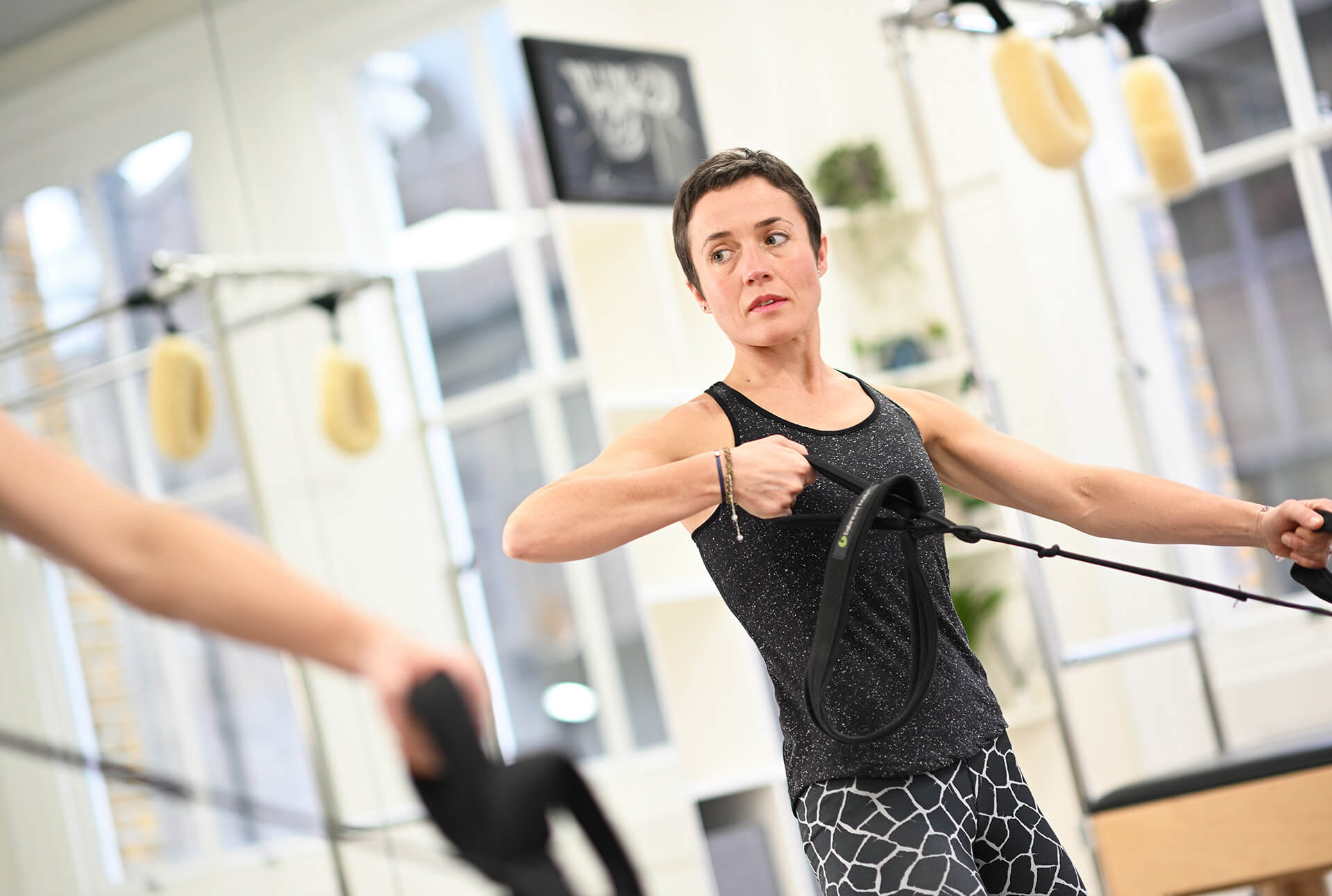The second in a series of posts from Ruth Smith Physio, Pilates instructor and Business development manager here at Complete Pilates on her Polestar progression through the training.
We’ve heard about what to expect when you start your training and here Ruth explains how the course progressed over the second and third weekends at Moss Pilates in London.
Polestar introduction
This second blog in the series following my journey through the Polestar course has taken me much longer than planned to write. This seems to be because since starting the course with Polestar last year it has been an incredibly busy few months and I have had to find time to fit in all the practice and reflection required alongside the normal day to day life!
The SR2 and SR3 weekends introduced us to Polestar mentor Diane (Diane Nye, Polestar educator and Franklin method teacher). What she explained about our learning with Polestar fits with the fact that I have only just got to writing this blog now!
To be a good movement teacher you must fully understand and master it, our bodies reflect what we have done with them. Give yourself time to appreciate and recognise the change in your body
It felt reassuring to hear that it really does take time to know the exercises and this takes practice, practice and more practice!
I am very lucky to work in a company at Complete Pilates where we have many graduates and students of Polestar Pilates as well as other schools of Pilates. We have a very open environment in the studio where we learn from each other, clinically reason case studies and practice together regularly. This makes it easily accessible to have plenty of practice time and yet it still is a challenge to fit it in. If you are taking on this course, make sure you have a plan of when and where you can practice!

Polestar imagery
One of the big themes and an important factor throughout the course and teaching is imagery. We did a lot of exploration around the many ways we can cue our clients to achieve the understanding and application of movement that we are looking for.
These are going to be different for different people and consider what we know about learning styles. Descriptions of exercises can be anatomical, talking about how the joints actually move and glide. Equally we can use metaphors that are wildly detached from our body and yet access the understanding of movement in a different and often clearer way.
This brings in the understanding of how our brains work, with practiced neural pathways and patterns of movement as well as memory and how we can access those memories of movement or understanding of new movement.
It’s fascinating that imagining something different in your mind can stimulate you to move in a different way. This is where the teaching becomes very powerful, it is so much more than just giving the exercises and reading the instructions of how to do them. To ‘image’ function, improves function, it is the same as an athlete who does mental rehearsing and imaging their race or event.
So give it a go with clients or as a client next time you are in class, listen to your instructor and use your imagination and brain to help you achieve fluent movement.

Fixating vs core control
One of the Polestar principles of Pilates is axial elongation and core control. We see clients all the time who can very effectively fix their abdominals but this does not give space or opportunity to move effectively.
Diane led us in exploring this as a group when we tried balancing and jumping with ‘fixation’ and then with ‘core control’. The first gave rigidity and lack of stability as well as a stress response. The change with this kind of movement learning is not only physical but also emotional and mental. You really do feel differently if you move differently and vice versa.
My take home message from Diane from this part of the course was this, which I believe is originally from Eric Franklin;
Be brave enough to withhold information
I have been trying to consider this in my teaching to prevent myself and my clients from drowning in cues and enabling them to find the one clear path to effective movement.
We’ll have more from Ruth and her teacher training course on the blog soon.
If you missed Ruth’s first Polestar blog you can read it here.
Get in touch if you want to find out more!
Education is key:
These blogs are designed to give information to everyone, however, it is important to remember that everyone is different! If you have not seen one of our therapists and have any questions about injuries, what you have read or whether this may be useful to you, please just ask. We are more than happy to help anyone and point you in the right direction. Our biggest belief is that education is key. The more you understand about your injury, illness and movement, the more you are likely to improve.




